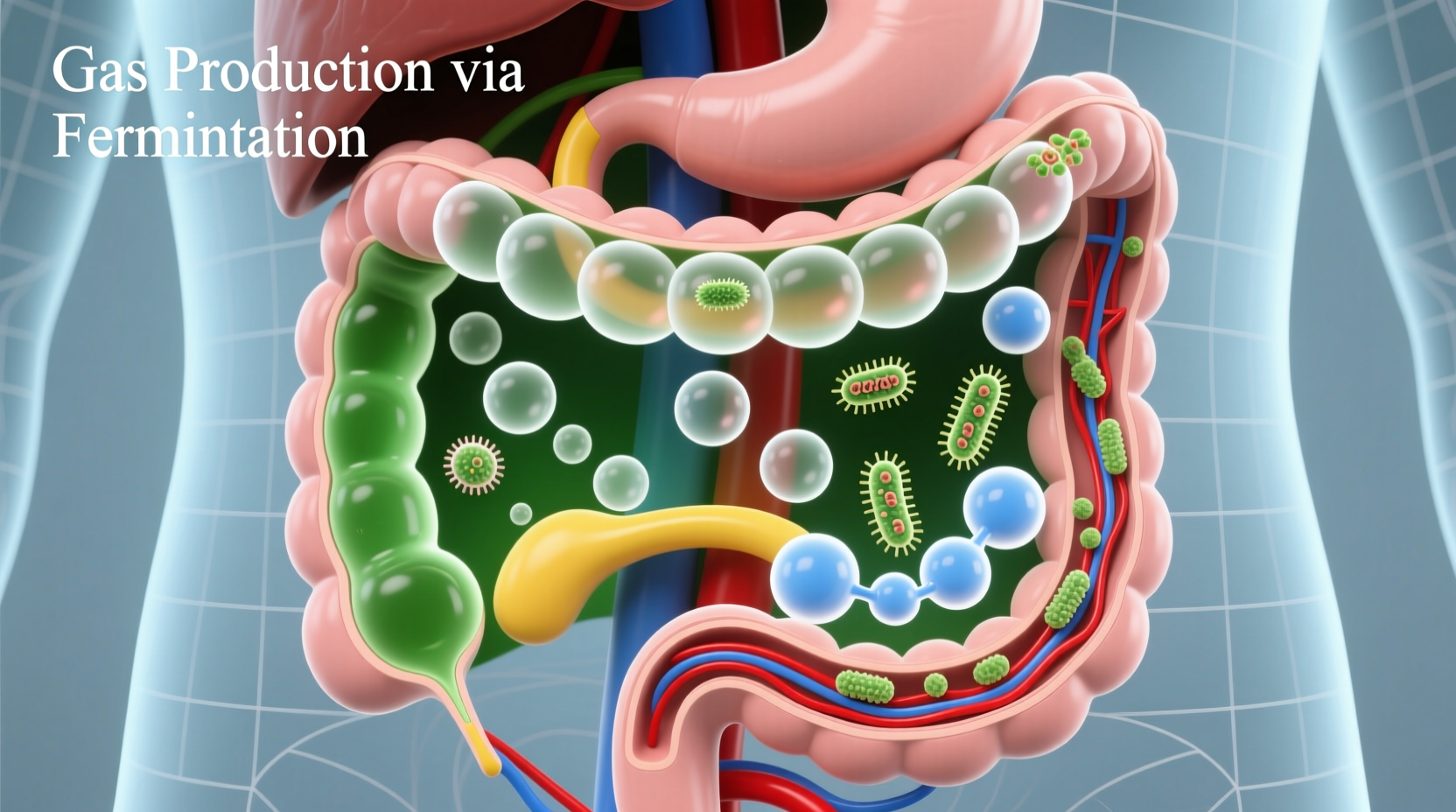If you're wondering what foods make gas, the most common culprits include beans, broccoli, dairy products, onions, apples, and carbonated beverages. These foods contain specific compounds like FODMAPs, fiber, or lactose that your gut bacteria ferment, producing hydrogen, methane, and carbon dioxide. Understanding which foods trigger gas and why can help you manage digestive discomfort while maintaining a balanced diet.
Experiencing occasional gas is completely normal—your digestive system produces 1-4 pints daily through natural bacterial fermentation. But when certain foods consistently leave you feeling bloated and uncomfortable, it's time to identify the specific triggers. This guide reveals exactly which foods cause gas, explains the science behind why they affect your digestion, and provides practical strategies to enjoy these nutritious foods without discomfort.
Why Certain Foods Cause Gas: The Digestive Science
Your digestive system struggles with specific carbohydrates that your small intestine can't fully break down. When these undigested compounds reach your large intestine, gut bacteria ferment them, producing gas as a natural byproduct. This process explains why high-FODMAP foods (Fermentable Oligosaccharides, Disaccharides, Monosaccharides, and Polyols) are primary gas producers. According to the Mayo Clinic, FODMAPs draw water into the intestine and ferment rapidly, causing bloating and gas in sensitive individuals.

Top Gas-Producing Foods by Category
Understanding which foods cause gas starts with recognizing common problematic categories. These aren't foods to eliminate entirely, but rather ones to monitor if you experience digestive sensitivity.
Legumes and Pulses
Beans, lentils, and chickpeas contain raffinose, a complex sugar your body lacks the enzyme to break down. When gut bacteria ferment raffinose, they produce significant gas. The National Institutes of Health notes that soaking and rinsing beans before cooking can reduce gas-producing compounds by up to 30%.
Cruciferous Vegetables
Broccoli, cauliflower, cabbage, and Brussels sprouts contain both raffinose and high fiber content. While incredibly nutritious, their sulfur compounds create particularly odorous gas when fermented by gut bacteria. Cooking these vegetables thoroughly breaks down some of the complex fibers, making them easier to digest.
Dairy Products
Milk, cheese, and ice cream cause gas in people with lactose intolerance, which affects approximately 68% of the global population according to Harvard Health. Without sufficient lactase enzyme, undigested lactose ferments in the colon, producing gas, bloating, and discomfort.
High-Fiber Fruits
Apples, pears, and peaches contain sorbitol and fructose that many people struggle to absorb completely. Bananas and berries generally cause less gas, making them better options for sensitive digestive systems.
| Food Category | Primary Gas-Producing Compound | Typical Onset Time | Gas Reduction Strategy |
|---|---|---|---|
| Legumes | Raffinose | 6-8 hours | Soak overnight, rinse thoroughly |
| Cruciferous Vegetables | Raffinose & Sulfur compounds | 4-6 hours | Cook thoroughly, eat smaller portions |
| Dairy | Lactose | 30 mins-2 hours | Lactase supplements, fermented dairy |
| Artificial Sweeteners | Sorbitol, Xylitol | 1-3 hours | Limit consumption, check labels |
Understanding Your Personal Gas Timeline
Gas production follows a predictable pattern after eating problematic foods. Recognizing this timeline helps identify triggers:
- 0-30 minutes: Immediate discomfort usually indicates swallowing air (from eating quickly or carbonated drinks)
- 30-120 minutes: Rapid gas production often points to lactose intolerance or artificial sweeteners
- 2-6 hours: Moderate onset typically relates to high-fiber fruits and vegetables
- 6-8 hours: Delayed gas usually comes from legumes and complex carbohydrates
This digestive timeline, documented by gastroenterologists at the American Gastroenterological Association, helps distinguish between normal digestion and potential food intolerances.
Practical Strategies to Reduce Gas Discomfort
You don't need to eliminate nutritious gas-producing foods—just manage them strategically:
Smart Preparation Techniques
Soaking beans for 8-12 hours before cooking significantly reduces oligosaccharides. When preparing cruciferous vegetables, cook them thoroughly rather than eating raw. For dairy, choose fermented options like yogurt and kefir which contain natural lactase from the fermentation process.
Gradual Fiber Introduction
Rather than eliminating high-fiber foods, gradually increase your intake over weeks. Your gut bacteria adapt to new fiber sources, reducing gas production over time. Start with small portions of gas-producing foods and monitor your body's response.
Strategic Food Pairing
Combine gas-producing foods with digestive aids like ginger, fennel, or cumin. These spices contain compounds that help relax intestinal muscles and move gas through your system more efficiently. Eating gas-producing foods earlier in the day gives your digestive system more time to process them before bedtime.
When Gas Signals a Medical Concern
While occasional gas is normal, persistent symptoms may indicate underlying conditions. Consult a healthcare provider if you experience:
- Severe pain that disrupts daily activities
- Unintentional weight loss
- Blood in stool
- Symptoms that persist despite dietary changes
The National Institute of Diabetes and Digestive and Kidney Diseases emphasizes that while gas is common, sudden changes in bowel habits or persistent discomfort warrant medical evaluation to rule out conditions like irritable bowel syndrome (IBS), inflammatory bowel disease (IBD), or celiac disease.
Creating Your Personal Gas Management Plan
Developing a personalized approach to gas-producing foods involves tracking, testing, and adjusting:
- Keep a food and symptom journal for 2-3 weeks, noting everything you eat and any gas symptoms
- Eliminate suspected triggers one at a time for 3-5 days to identify specific problem foods
- Reintroduce foods systematically to determine your personal tolerance levels
- Implement preparation strategies for foods you identify as problematic
This evidence-based approach, recommended by registered dietitians at the Academy of Nutrition and Dietetics, helps maintain dietary variety while minimizing discomfort.











 浙公网安备
33010002000092号
浙公网安备
33010002000092号 浙B2-20120091-4
浙B2-20120091-4